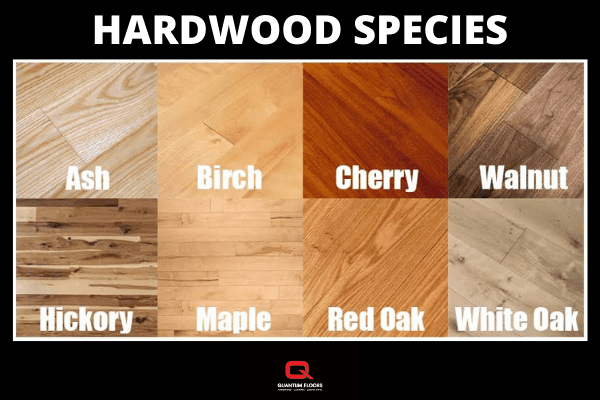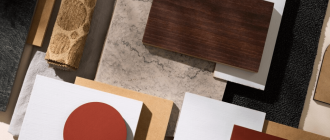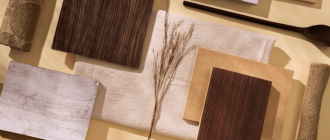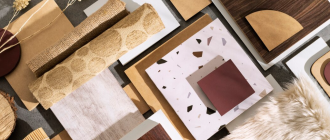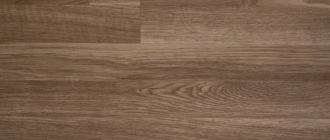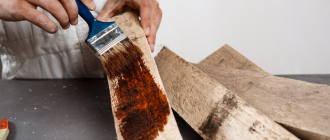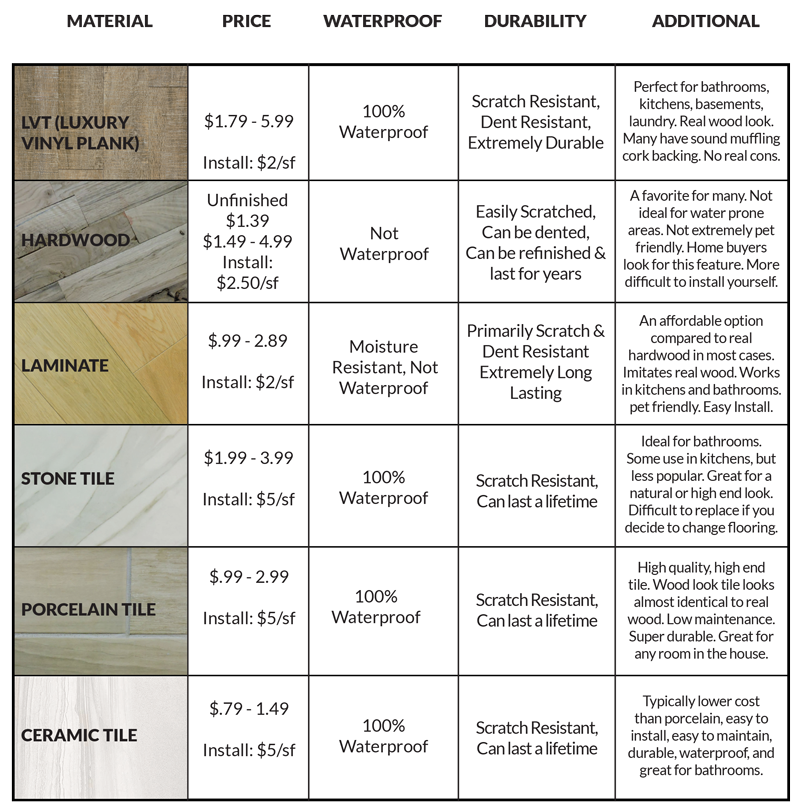
A Guide to Hardwood Floor Species
When it comes to choosing the perfect hardwood floor for your home, there are a vast array of varieties and species to consider. Hardwood flooring is a timeless and elegant choice that can significantly enhance the beauty and value of your space. However, with so many options available, it can be overwhelming to navigate through the different types of wood and their unique characteristics.
This guide aims to provide you with a comprehensive overview of the various hardwood floor species, highlighting their different features, strengths, and weaknesses. Whether you are looking for a durable flooring option for high-traffic areas or a stunning focal point for your living room, understanding the qualities of different hardwood species is essential for making an informed decision.
From classic species like oak and maple to exotic options like Brazilian cherry and teak, each type of hardwood comes with its own distinct color, grain pattern, hardness, and durability. Moreover, certain species are more suitable for specific installation methods, such as solid wood planks or engineered hardwood. By delving into this guide, you will gain a deeper understanding of the characteristics of different hardwood species and be able to choose the perfect flooring option for your home.
Understanding Hardwood Floor Species
When it comes to choosing the right hardwood floor for your home, it’s important to understand the different species of wood available. Each species has its own unique characteristics and qualities that can greatly impact the look, durability, and maintenance of your floor.
Hardwood floors are made from real wood, which gives them a natural beauty and warmth that is hard to replicate with other flooring options. They are also known for their longevity, often lasting for decades with proper care and maintenance.
One of the first considerations when choosing a hardwood floor species is its hardness. The Janka hardness scale measures the hardness of various wood species based on their resistance to denting and wear. Species with a higher Janka rating, such as oak or maple, are more durable and better suited for high-traffic areas.
The natural color and grain pattern of each hardwood species can also influence the overall look of your floor. Some species, like cherry or walnut, have a rich, dark color that adds a sense of luxury and elegance to any space. Others, like maple or birch, have a lighter, more neutral color that can create a brighter and more airy feel in a room.
It’s also important to consider the maintenance requirements of different hardwood species. Some species, like pine or fir, are softer and more susceptible to scratches and dents. Others, like bamboo or Brazilian cherry, are more resistant to wear and tear.
When it comes to installation, different hardwood species may require different techniques. Some species, like engineered wood, are designed for easy installation and can be floated or glued down. Others, like solid wood, may require nailing or stapling to a subfloor.
In addition, there are many different types of hardwood floor species to choose from, each with its own unique characteristics. Oak, maple, cherry, walnut, and hickory are among the most popular options, but there are also exotic species like Brazilian cherry, teak, and bamboo that can add a unique flair to your home.
In conclusion, understanding the different hardwood floor species is essential when choosing the right floor for your home. Consider factors such as hardness, color, maintenance, and installation to make an informed decision that suits your needs and preferences.
Factors to Consider When Choosing a Species
When it comes to choosing the right hardwood species for your floor, there are several factors that you should consider. Each species of wood has its own unique characteristics, which can greatly impact your floor’s appearance, durability, and maintenance requirements. Here are some key factors to keep in mind:
- Hardness: Hardwood species vary in terms of their hardness, which is important to consider depending on the level of foot traffic your floor will endure. Harder woods like oak or maple are more resistant to wear and tear, making them suitable for high-traffic areas.
- Aesthetics: The species of wood you choose will greatly impact the overall look and feel of your floor. Different species have distinct grain patterns, color variations, and natural characteristics, all of which can add character and warmth to your space. Consider the style and ambiance you want to achieve when selecting a species.
- Stability: Some hardwood species are more stable than others, meaning they are less likely to expand or contract with changes in temperature and humidity. This is an important consideration, especially if you live in an area with extreme climate conditions.
- Availability: Certain hardwood species may be more readily available and affordable than others. It’s important to check if the species you have in mind is easily accessible and fits within your budget.
- Installation: Some hardwood species are easier to install than others. Certain species may require specific tools or techniques during installation, so it’s crucial to factor in the installation process when selecting a species.
Overall, choosing the right hardwood species is a crucial step in creating a beautiful and long-lasting floor. By considering the factors mentioned above, you can make an informed decision that suits your style preferences, lifestyle, and budget. For more detailed information on different hardwood species and their characteristics, refer to our comprehensive hardwood floor species guide.
Popular Hardwood Floor Species
When it comes to choosing hardwood flooring for your home, there are a variety of species to choose from. Each species has its own unique characteristics and benefits. In this guide, we will explore some of the most popular hardwood floor species and discuss their installation, maintenance, and overall appeal.
- Oak: Oak is one of the most widely used hardwood species for flooring. It is known for its durability and versatility. Oak flooring is available in a range of colors, from light to dark, and is relatively easy to install and maintain.
- Maple: Maple hardwood is prized for its natural beauty and hardwearing properties. It has a light color and a smooth grain, making it a popular choice for modern and contemporary homes. Maple floors are resistant to scratches and dents, but they do require regular maintenance to preserve their luster.
- Cherry: Cherry hardwood is admired for its rich, reddish-brown color and fine grain. It adds warmth and elegance to any room and develops a beautiful patina over time. Cherry floors are more prone to scratches and dents than oak or maple, so they may require more maintenance.
- Walnut: Walnut flooring is known for its deep, chocolate-brown color and striking grain patterns. It provides a classic and luxurious look to any space. While walnut is softer than oak or maple, it is still a durable option for residential use. Regular maintenance is necessary to enhance its beauty and prevent damage.
These are just a few examples of popular hardwood floor species. There are many other types of wood to choose from, such as hickory, birch, and ash, each with its own distinct characteristics. When selecting the right hardwood floor for your home, consider factors such as style, durability, and maintenance requirements. Consulting a flooring professional or using a comprehensive hardwood floor species guide can help you make an informed decision.
| Oak | Light to dark | Straight grain | Durable |
| Maple | Light | Smooth grain | Hardwearing |
| Cherry | Reddish-brown | Fine grain | Moderate durability |
| Walnut | Chocolate-brown | Striking grain | Durable |
Remember, the hardwood species you choose can greatly impact the overall look and feel of your floors. Take the time to research and consider your options before making a final decision. With proper installation and maintenance, a hardwood floor can provide a beautiful and timeless addition to your home.
Oak
Oak is one of the most popular hardwood species used for flooring. It is known for its durability and beauty, making it a versatile choice for any home.
There are two main varieties of oak used for hardwood floors: red oak and white oak. Red oak has a slightly reddish tone, while white oak has a more neutral, brownish color. Both varieties have distinct grain patterns that add character to the wood.
Installation of oak hardwood floors can be done using the nail-down method or the floating floor method. The nail-down method involves nailing the planks directly to the subfloor, while the floating floor method uses an interlocking system to hold the planks together without the need for nails or adhesive.
Oak floors are relatively easy to maintain. Regular sweeping or vacuuming to remove dirt and debris is recommended. Avoid using excessive water or harsh chemicals for cleaning, as these can damage the wood. Instead, use a damp mop or a hardwood floor cleaner specifically designed for oak floors.
A comprehensive guide to oak hardwood floors can be a helpful resource for homeowners looking to choose the right species and learn about proper installation and maintenance methods. It can provide valuable information on the different varieties of oak, their characteristics, and the best practices for keeping them in top condition.
Maple
Maple is a popular choice for hardwood flooring due to its durability and natural beauty. There are several varieties of maple that are used for flooring, including Hard Maple (also known as Sugar Maple or Rock Maple) and Soft Maple.
Hard Maple is the most common species used for flooring. It has a light, creamy color with a subtle grain pattern. Hard Maple is known for its resistance to wear and tear, making it a great choice for high-traffic areas. It is also highly resistant to staining, which makes it easy to clean and maintain.
Soft Maple, as the name suggests, is a bit softer than Hard Maple. It has a similar appearance, but with slightly more variation in color. Soft Maple is often less expensive than Hard Maple and is a popular choice for those on a budget.
Installing a maple hardwood floor is a straightforward process. It can be installed using either the nail-down or floating method. The nail-down method involves attaching each plank to the subfloor using nails or staples. The floating method involves interlocking the planks and placing them on top of a foam underlayment. Both methods result in a beautiful and durable floor.
One important thing to consider when choosing a maple hardwood floor is the grade of the wood. Maple is typically available in three grades: clear, select, and natural. Clear maple has the fewest visible knots and defects, while natural maple has a more rustic look with more visible variation in color and grain. Select maple falls in between the two, with some visible knots and variation.
In conclusion, maple is a versatile and beautiful species for hardwood flooring. With its various types, easy installation, and different grades, there is a maple floor to suit any home and budget.
Cherry
Cherry is a popular hardwood species used for flooring due to its rich, warm, and inviting appearance. It is known for its natural red tones that deepen over time. Cherry hardwood floors can add elegance and sophistication to any room.
Varieties of Cherry Wood
There are two primary species of cherry used for flooring: American cherry (Prunus serotina) and Brazilian cherry (Jatoba). American cherry is known for its softer texture and warm reddish-brown color, while Brazilian cherry features a darker, redder color and is significantly harder and more durable.
Maintenance
Cherry hardwood floors require regular maintenance to keep them looking their best. Sweeping or vacuuming regularly and promptly cleaning up spills is essential. Avoid using harsh chemicals or abrasive cleaners that can damage the wood. Instead, opt for a gentle wood floor cleaner recommended by the manufacturer.
Floor Installation
Cherry hardwood flooring can be installed in various ways, including nail-down, glue-down, or floating installation methods. Nail-down installation involves nailing each plank to the subfloor, while glue-down installation requires using an adhesive to attach the hardwood directly to the subfloor. Floating installation involves interlocking the planks and laying them over an underlayment.
Durability
While American cherry is softer and more prone to dents and scratches, Brazilian cherry is one of the hardest wood flooring species available. Brazilian cherry is highly resistant to wear and tear and is an excellent choice for high-traffic areas.
A Comprehensive Guide to Hardwood Floor Species
Cherry wood is just one of many species available for hardwood flooring. To learn about other popular hardwood species and find more information on maintenance, floor installation, and wood species, refer to our comprehensive guide to hardwood floor species for your home.
Walnut
Walnut is a popular choice for hardwood flooring due to its rich, dark color and unique grain patterns. It is known for its durability and strength, making it a suitable option for high-traffic areas in the home.
There are two main types of walnut wood used for flooring: American walnut (black walnut) and European walnut (English walnut). American walnut tends to have a darker color and more pronounced grain, while European walnut has a lighter, more subtle appearance.
Walnut floors require regular maintenance to keep them looking their best. Sweeping or vacuuming should be done regularly to remove dirt and debris that can scratch the surface. It is also recommended to use a damp mop with a hardwood floor cleaner to remove any stains or spills.
When installing walnut hardwood flooring, it is important to acclimate the wood before installation. This involves allowing the wood to adjust to the humidity and temperature of the room for a certain period of time. This helps to prevent warping or buckling of the planks after installation.
Here are some key points to consider when choosing walnut flooring:
- Color: Walnut has a rich, dark brown color with hints of purple and black. It can add warmth and elegance to any room.
- Grain: Walnut has a straight grain with occasional swirls and burls, giving it a unique and interesting appearance.
- Hardness: Walnut is a relatively hard wood, making it resistant to scratches and dents. It is suitable for areas with heavy foot traffic.
- Price: Walnut flooring is considered a luxury option and can be more expensive than other hardwood species.
In conclusion, walnut is a beautiful and durable hardwood flooring option. Its rich color, unique grain patterns, and strength make it a popular choice among homeowners. With proper maintenance and installation, walnut floors can provide years of beauty and functionality to any home.
Hickory
Hickory is a popular species of hardwood that is commonly used for flooring. It is known for its durability and strength, making it a great choice for areas with high foot traffic.
When it comes to maintenance, hickory floor requires regular cleaning and maintenance to keep it looking its best. Sweeping or vacuuming the floor regularly will help remove dirt and debris that can cause scratches. It is also recommended to use a damp mop with a hardwood floor cleaner to remove any stains or spills.
There are several varieties of hickory wood available, each with its unique characteristics and appearance. Some of the most common types include Shagbark Hickory, Shellbark Hickory, and Pignut Hickory. These varieties vary in color, grain pattern, and hardness, allowing homeowners to choose the perfect hickory floor for their home.
Hickory is one of the hardest and most durable hardwood species, making it an excellent choice for high-traffic areas like hallways and kitchens. Its natural resistance to dents and scratches ensures that your hickory floor will withstand daily wear and tear.
In terms of aesthetics, hickory has a beautiful range of warm tones, including light browns and rich reddish-browns. The grain pattern of hickory is often characterized by pronounced color variations and darker streaks, adding character and charm to any room.
Overall, hickory is a versatile and attractive option for hardwood flooring. Its durability, variety of species, and unique aesthetics make it a popular choice for homeowners looking for a long-lasting and visually appealing floor. Whether you’re looking for a rustic, traditional, or modern look, hickory flooring can complement any style of home decor.
Ash
Ash is a popular choice for hardwood flooring due to its durability and unique grain patterns. There are several types of ash wood that are commonly used for flooring, including:
- White Ash: This species of ash is known for its light color and straight grain. It is often used in contemporary or modern homes.
- Black Ash: Black ash has a darker color and a tighter, more pronounced grain pattern. It is often used in traditional or rustic-style homes.
When it comes to installation, ash hardwood flooring is typically installed using the nail-down method. This involves attaching the planks to a plywood subfloor using a nail gun. It is important to leave a small gap between the planks to allow for expansion and contraction.
Before installing ash hardwood flooring, it is important to properly prepare the subfloor. This includes removing any existing flooring, ensuring the subfloor is level, and installing a moisture barrier if necessary.
Once the subfloor is ready, the ash hardwood flooring can be installed. It is important to follow a step-by-step guide to ensure a successful installation. This guide should include instructions on acclimating the wood, laying the first row, cutting and fitting the planks, and applying the finishing touches.
One of the advantages of ash hardwood flooring is its versatility. It can be stained to achieve a variety of different colors, ranging from light blonde to rich espresso. It can also be finished with different types of sealants to enhance its durability and protect it from everyday wear and tear.
| Highly durable | Can be expensive |
| Unique grain patterns | Can be prone to scratching |
| Can be stained to achieve various colors | Requires regular maintenance |
In conclusion, ash hardwood flooring is a popular choice for homeowners due to its durability, unique grain patterns, and versatility. With proper installation and maintenance, ash hardwood flooring can add beauty and value to any home.
Birch
Birch is a popular choice for hardwood flooring due to its natural beauty and durability. With its light color and subtle grain pattern, birch can easily complement any style of home decor. It is also known for its strength and resistance to wear and tear.
There are several species of birch that are commonly used for flooring purposes. The most common types include yellow birch (Betula alleghaniensis) and white birch (Betula papyrifera). Yellow birch is known for its warm, golden hue, while white birch has a lighter, cream-colored appearance.
One of the advantages of birch flooring is its versatility. It can be installed in various parts of the house, including living rooms, bedrooms, and even kitchens. It is recommended, however, to avoid using birch in areas with high moisture levels, such as bathrooms and basements.
When it comes to maintenance, birch flooring is relatively easy to care for. Regular sweeping or vacuuming is usually enough to keep it clean. It is also necessary to wipe up any spills immediately to prevent staining. Additionally, using a protective finish can help enhance the longevity of the floor and maintain its original beauty.
Below is a table summarizing the characteristics of different birch species:
| Yellow Birch | Warm golden | Subtle | 1,260 lbf |
| White Birch | Light cream | Subtle | 900 lbf |
In conclusion, birch is an excellent choice for hardwood flooring due to its natural beauty, durability, and versatility. Whether you prefer the warm tones of yellow birch or the lighter hues of white birch, this species is sure to enhance the overall aesthetics of your home. With proper installation and regular maintenance, birch flooring can last for many years to come.
Pine
Pine is a popular choice for hardwood flooring due to its many varieties and affordability. It is a softwood, which means it is not as hard as other hardwood species, but it still provides a beautiful and durable flooring option.
Pine wood has a light, pale yellow color with subtle grain patterns. It is known for its rustic charm and natural character. Pine floor species include Eastern White Pine, Knotty Pine, and Southern Yellow Pine, each with its own unique characteristics and appearances.
Maintenance of pine hardwood floors is relatively easy. Regular sweeping and vacuuming will help keep the floors clean, while avoiding excessive moisture is necessary to prevent warping or cupping. Pine floors can be sanded and refinished multiple times to restore their original beauty and remove any signs of wear and tear.
The installation process for pine floors is similar to other hardwood species. They can be installed using nail-down, glue-down, or floating methods. It is important to acclimate the flooring to the room’s humidity and temperature conditions before installation to prevent any future issues.
Pine hardwood floors come in different types, including solid and engineered options. Solid pine floors are made of one solid piece of wood and provide a more authentic look, while engineered pine floors are made of multiple layers of wood with a top layer of pine for added stability.
In conclusion, pine is a versatile and affordable hardwood flooring species. With proper maintenance and installation, pine floors can enhance the beauty and elegance of any space.
Mahogany
Of all the hardwood floor species available, mahogany offers a unique combination of beauty and durability. There are several varieties of mahogany wood, each with its own distinguishing features and characteristics. Whether you choose African, Brazilian, or Honduran mahogany, you can be sure that your hardwood floor will be a stunning addition to your home.
Installation of mahogany floors is similar to that of other hardwood species. The planks are typically tongue and groove, allowing for easy installation and a secure fit. It is important to acclimate the mahogany wood to the environment before installation to minimize the risk of contraction or expansion. A professional installer can ensure a proper installation and enhance the longevity of your mahogany floor.
Maintenance of mahogany floors is relatively simple. Regular sweeping or vacuuming can remove dirt and debris, while a damp mop can be used for more thorough cleaning. It is important to avoid using excessive water or harsh chemicals, as these can damage the wood. Applying a protective sealant or wax can help maintain the natural beauty of your mahogany floor.
In conclusion, mahogany is a popular choice for hardwood floors due to its beauty and durability. With its various varieties, easy installation, and simple maintenance, mahogany is a great option for homeowners looking for a stunning and long-lasting floor. This comprehensive guide to hardwood floor species will help you make an informed decision when it comes to choosing the perfect wood for your home.
Teak
Teak is one of the most popular species of hardwood used for flooring. It is known for its durability, beauty, and resistance to water and pests. In this section of the guide, we will discuss the varieties, maintenance, and installation of teak floors.
Varieties:
Teak is available in various grades, colors, and finishes. The most common varieties of teak used for flooring are:
- Burmese teak
- African teak
- Brazilian teak
- Thai teak
Maintenance:
Teak floors require regular maintenance to keep them looking their best. Here are some tips for maintaining teak floors:
- Regularly sweep or vacuum to remove dirt and debris.
- Wipe up spills immediately to prevent staining.
- Use a damp cloth or mop to clean the floor, and avoid excessive moisture.
- Avoid using harsh chemicals or abrasive cleaners, as they can damage the wood.
- Apply teak oil or sealer periodically to keep the wood protected and enhance its natural beauty.
Hardwood Species:
Teak belongs to the hardwood species, which are known for their density and durability. Other popular hardwood species used for flooring include oak, maple, cherry, and walnut.
Installation:
Teak flooring can be installed using different methods, including nail-down, glue-down, and floating. The installation method will depend on the type of teak flooring and the subfloor. It is recommended to hire a professional installer to ensure proper installation and avoid any issues.
Bamboo
Bamboo is a popular choice for hardwood flooring due to its unique characteristics and sustainability. It is a type of grass rather than a traditional hardwood species, but it is classified as a hardwood because of its density and durability.
Maintenance:
Bamboo floors require regular maintenance to keep them looking their best. Sweep or vacuum regularly to remove dirt and debris. Avoid wet mopping, as excess moisture can damage the bamboo. Instead, use a damp mop or cloth to clean up spills and stains.
Installation:
Installing bamboo flooring can be done through various methods, including nail-down, glue-down, or floating installation. The installation method depends on the specific type of bamboo flooring chosen and the subfloor conditions. It is important to follow the manufacturer’s instructions for proper installation.
Types and Species:
There are two main types of bamboo flooring: solid and engineered. Solid bamboo is made from strips of bamboo that are glued together to create solid planks. Engineered bamboo consists of a thin layer of bamboo veneer on top of a plywood or high-density fiberboard (HDF) core. Both types come in a variety of species, including natural, carbonized, and strand woven.
- Natural bamboo: This type of bamboo is light in color and offers a clean, modern look.
- Carbonized bamboo: Carbonization is a process that darkens the color of the bamboo by applying heat. Carbonized bamboo has a warm, caramelized appearance.
- Strand woven bamboo: This type of bamboo is made by compressing bamboo fibers together under extreme pressure. It is the most durable and resistant to dents and scratches.
Varieties:
In addition to the different types and species, bamboo flooring comes in a variety of finishes, including matte, semi-gloss, and high-gloss. Each finish offers a different level of shine and can affect the overall appearance of the floor.
Bamboo flooring is a versatile and sustainable option for homeowners looking for a durable and environmentally friendly flooring solution. With proper maintenance and installation, it can enhance the beauty of any space.
Cork
Cork is a unique and environmentally friendly option for flooring. It is made from the bark of the cork oak tree, which is harvested without harming the tree. Here is a comprehensive guide to cork floors and its different aspects:
Installation:
- Cork floors can be installed using a variety of methods, including glue-down, floating, and click-lock.
- Glue-down installation involves adhering the cork tiles or planks directly to the subfloor using a strong adhesive.
- Floating installation involves laying the cork planks or tiles over an underlayment, allowing them to “float” above the subfloor.
- Click-lock installation involves interlocking the cork planks or tiles together, creating a seamless and secure floor.
Species:
- Cork is available in different species, although the most common one is the cork oak.
- Each cork species has its own unique characteristics, such as color, texture, and grain pattern.
- Some popular cork species include the Portuguese cork oak, the Tunisian cork oak, and the Spanish cork oak.
Types:
- Cork flooring comes in both tiles and planks.
- Cork tiles are generally available in square or rectangular shapes and can be installed in a variety of patterns.
- Cork planks mimic the look of hardwood flooring and are available in different widths and lengths.
Maintenance:
- Cork floors are relatively easy to maintain.
- Sweep or vacuum the floor regularly to remove dirt and debris.
- Wipe up spills immediately to prevent staining.
- Use a damp mop and mild cleaner specifically designed for cork floors to clean them.
- Avoid using harsh chemicals or excessive water, as they can damage the cork.
In conclusion, cork floors are a versatile and environmentally friendly option for your home. With different installation methods, species, and types available, you can find the perfect cork floor for your space. Additionally, proper maintenance will help keep your cork floor looking beautiful for years to come.
Questions and answers:
What are the most popular hardwood floor species?
The most popular hardwood floor species are oak, maple, cherry, and walnut.
What are the main differences between oak and maple hardwood floors?
Oak hardwood floors have a more pronounced grain pattern and are available in a wider range of colors. Maple hardwood floors have a more subtle grain pattern and are typically lighter in color.
Are there any hardwood floor species that are more resistant to scratches?
Yes, some hardwood floor species, such as hickory and Brazilian walnut, are known for their superior durability and resistance to scratches.
What is the best hardwood floor species for high-traffic areas?
The best hardwood floor species for high-traffic areas are oak, maple, and hickory. These species are known for their durability and ability to withstand heavy foot traffic.
